Installing IIS Express
Please note that, although it's included with the product, IIS Express is not automatically installed when Logi Studio is installed. Developers who have no need of IIS Express (i.e. those who have IIS installed already) will never see it.
![]() If you have regular IIS installed and decide to "turn it off" in
Control Panel in order to see how IIS Express works, when you turn it back
on later you may not have all of your IIS custom Application Pools and
Virtual Directories restored! If that happens, they can be restored as
part of a general System Restore Point restore operation (assuming you
have a recent Restore Point saved). This is not something we recommend, in
general, so if you must do it, do it on a dedicated test machine, not your
development or production machine.
If you have regular IIS installed and decide to "turn it off" in
Control Panel in order to see how IIS Express works, when you turn it back
on later you may not have all of your IIS custom Application Pools and
Virtual Directories restored! If that happens, they can be restored as
part of a general System Restore Point restore operation (assuming you
have a recent Restore Point saved). This is not something we recommend, in
general, so if you must do it, do it on a dedicated test machine, not your
development or production machine.
The first time Logi Studio is used to create a new application (by
selecting File
![]() New Application... from Studio's main menu), its New Application wizard
will determine whether IIS is installed on the computer where Studio is
installed.
New Application... from Studio's main menu), its New Application wizard
will determine whether IIS is installed on the computer where Studio is
installed.
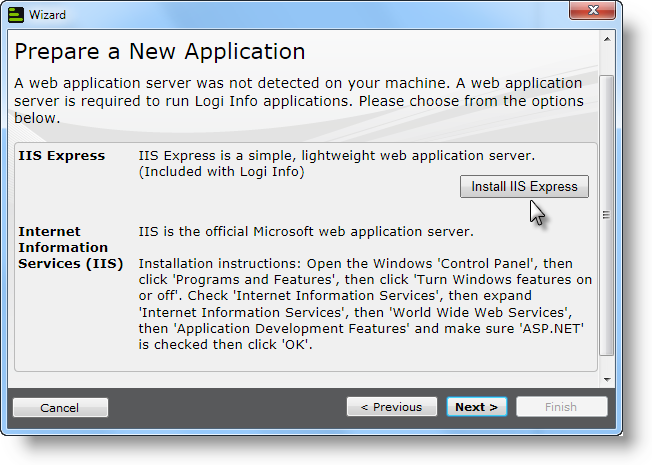
If Studio can't detect an IIS installation, the dialog box above will be displayed. The user can then decide whether to install IIS Express or IIS. Why would anyone decide to use IIS Express instead of IIS?
- IIS Express, as installed by Studio, is configured and ready to go immediately and does not need the additional configuration IIS requires.
- IIS Express can be installed and administered by users who do not have Admin privileges on their computer.
- IIS Express can be easily uninstalled when no longer needed.
If you decide to install IIS Express, click Install IIS Express, as shown above, and a separate installer is launched:
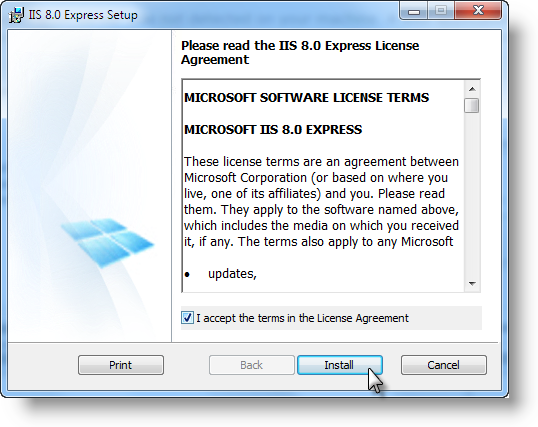
As shown above, you'll need to accept the License Agreement and click
Install.
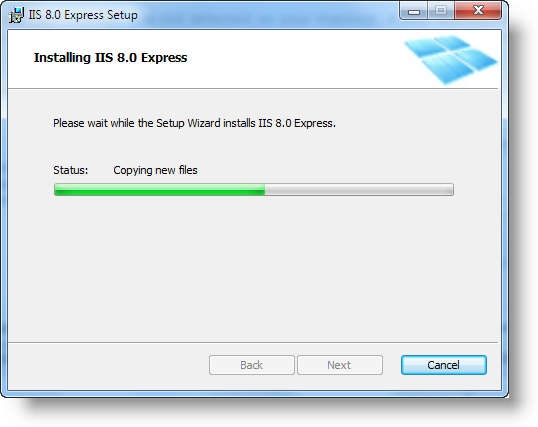
Once the installation starts, progress will be displayed in the dialog box
shown above.
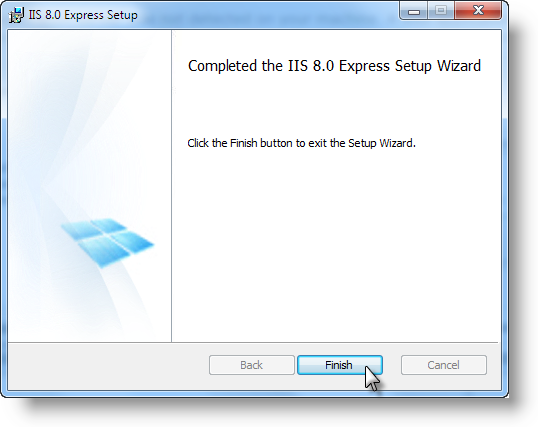
When the installation is complete, click Finish to return to
Studio's New Application wizard.
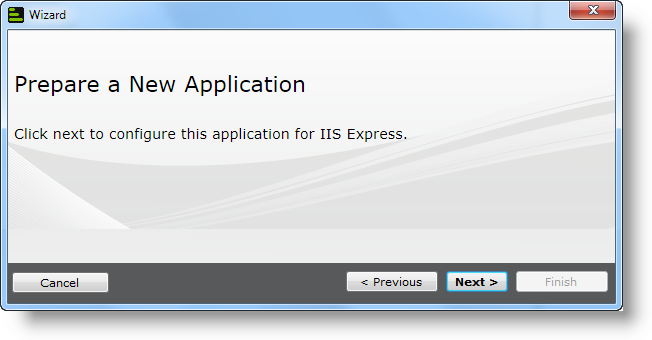
Once IIS Express is installed, Studio becomes aware that it's dealing with IIS Express and not IIS, and it adjusts its prompts, wizards, and activities to be compatible with IIS Express, as shown above.

Once the wizard finishes, the only difference you can see in your report will be in its _Settings definition. The Path element's Application Path attribute will have a an address value similar to the one shown above. The high-lighted part is a port number, which will be different for each Logi app you create. Your Logi applications will be displayed just as they would if you had regular IIS installed: you can preview them in Studio and browse them by using the Studio browse button and link or by entering their URL in an independent browser window.